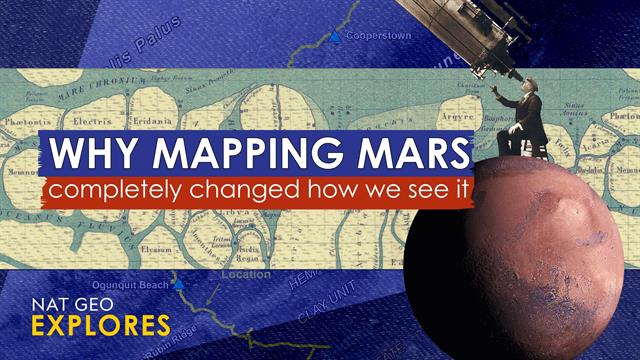Mapping Mars: Rivalries and Our Obsession
The red planet has captivated humanity for centuries. From ancient astronomers to modern-day scientists, Mars has fueled our imaginations and driven ambitious explorations. But the quest to map Mars isn't just a scientific endeavor; it's a story of international rivalries, relentless technological innovation, and an unwavering human obsession with understanding our place in the cosmos. This article delves into the history, the present, and the future of mapping the fourth planet from the sun, exploring the competitive landscape and the profound implications of our ongoing Martian cartography.
The Early Days: Telescopic Glimpses and Speculative Maps
Before the space age, our understanding of Mars was limited to telescopic observations. Early astronomers like Giovanni Schiaparelli, despite his controversial "canali" (channels) observations that sparked speculation of Martian civilization, laid the groundwork for rudimentary Martian maps. These early maps, while crude by today's standards, represented a monumental leap in understanding our celestial neighbor. They were based on painstaking observation and fueled the burgeoning desire to unravel Mars' mysteries.
Key Developments in Early Martian Mapping:
- Schiaparelli's Observations (1877): While inaccurate in interpreting the "canali" as artificial waterways, his detailed observations spurred further investigation.
- Lowell Observatory's Contributions: Percival Lowell's extensive work, although also based on misinterpreted observations, significantly impacted public perception of Mars and fueled the Martian canal myth.
- Early Photographic Mapping: The advent of photography revolutionized the process, allowing for more detailed and accurate representations of Martian surface features.
The Space Race and the Rise of Detailed Cartography
The 20th century saw a dramatic shift in our ability to map Mars. The Space Race between the US and the Soviet Union propelled technological advancements that led to the first close-up images and data from orbiters and landers. This period marked a critical turning point, transitioning from speculative maps to scientifically accurate representations based on real-world data.
Landmark Missions:
- Mariner 4 (1965): Provided the first close-up images of Mars, revealing a cratered surface unlike anything previously imagined.
- Viking Program (1975-1982): Orbited and landed on Mars, significantly expanding our knowledge of its geology and atmosphere.
- Mars Global Surveyor (1997-2006): Created high-resolution topographic maps, providing unprecedented detail of Martian surface features.
Modern Mapping: Global Collaboration and Technological Leaps
Today, mapping Mars is a global effort. International collaborations, advanced technologies, and sophisticated data analysis techniques have resulted in incredibly detailed and accurate maps. These maps are not just visual representations; they’re essential tools for planning future missions, identifying potential landing sites, and understanding the planet's geological history and potential for past or present life.
Current Mapping Technologies and Missions:
- High-Resolution Orbiters: Missions like the Mars Reconnaissance Orbiter (MRO) and Mars Express continue to provide breathtaking imagery and crucial data.
- Rovers and Landers: Rovers like Curiosity and Perseverance provide ground-level data, including detailed compositional analysis and topographical surveys.
- LiDAR and Radar: Advanced remote sensing technologies allow for the creation of three-dimensional maps, revealing subsurface structures and hidden features.
The Future of Martian Cartography: A Race to Understand
The race to map Mars is far from over. Future missions, including ambitious plans for human exploration, will require increasingly sophisticated mapping technologies. This ongoing quest promises not only to unveil the secrets of Mars but also to advance our understanding of planetary formation, the potential for extraterrestrial life, and ultimately, our place in the universe.
Future Prospects:
- Detailed Subsurface Mapping: Unraveling the secrets beneath the Martian surface is a crucial next step.
- Human Exploration and Mapping: Human missions will inevitably lead to more detailed and nuanced maps, incorporating direct observations and sample collection.
- Artificial Intelligence and Machine Learning: AI will play a crucial role in processing and analyzing the massive datasets from future missions.
The ongoing endeavor to map Mars is a testament to human ingenuity and our relentless curiosity. It’s a story of competition, collaboration, and a shared fascination with the red planet. The maps we create are not just images; they are keys to unlocking the mysteries of Mars and, perhaps, answering some of humanity's most profound questions. Stay informed about the latest developments in Martian exploration and contribute to the ongoing conversation about this exciting frontier.
